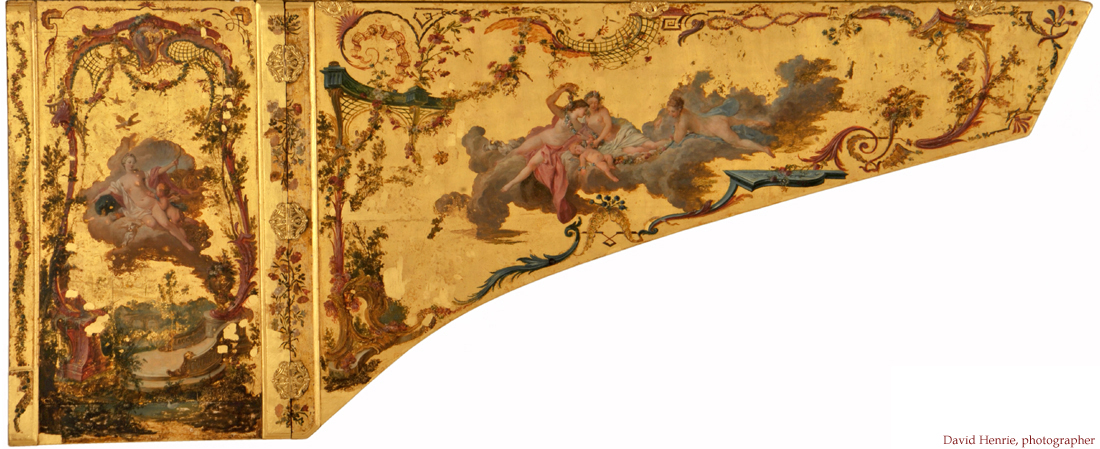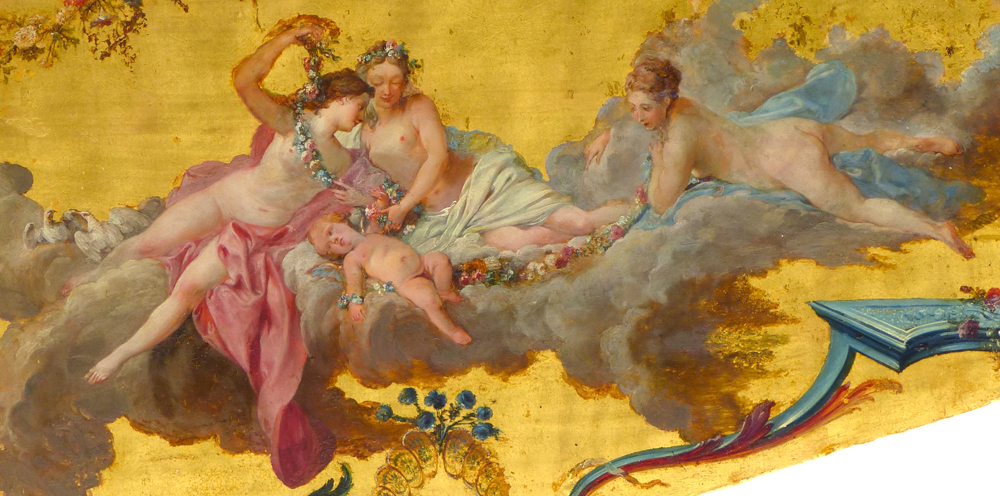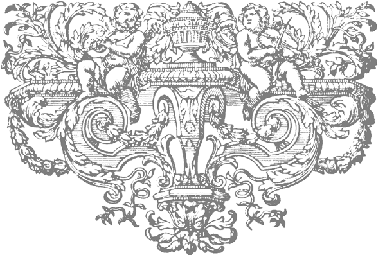![]()
A Franco-Flemish double-manual harpsichord,
![]()
The painting of
the outside of the lid of
the Franco-Flemish harpsichord

The outside of the lid has been decorated by three different artists, one painted the neo-classical figures, another painted the 'add-on' figure of Marie-Louise O'Murphy to the right of the main lid painting, and the third painted the ornamental decorations around these. The figure paintings on the outside of the lid have been attributed to François Boucher, Paris, 1750. These show Venus and her attributes on the top of the lid flap on the left, and Flora and Juno with the added reclining nude on the main lid on the right.
The roccoco decorations surrounding the figures have been attributed to Christophe Huet, Paris, 1750.
![]()
Venus and Cupid with their attributes. Venus herself represents the embodiment of love and sexuality. The Cupid is the God of desire, often portrayed as here as the son of Venus. The bow and quiver full of arrows represent Venus and Cupid's power in the victory of love. The scallop shell chariot rolls on golden wheel and Venus rests on a soft pillow with a tassel. Two loving doves, also representing pure love, coo sweetly below her.
![]()

A detail of the painting on
the outside of
the main lid showing Flora, Juno, a putto and a reclining nude
These paintings, of an exceptionally high quality, have been attributed to François Boucher, Paris, 1750. For a discussion of the added figure of Marie-Louise O'Murphy on the right above, click here.
